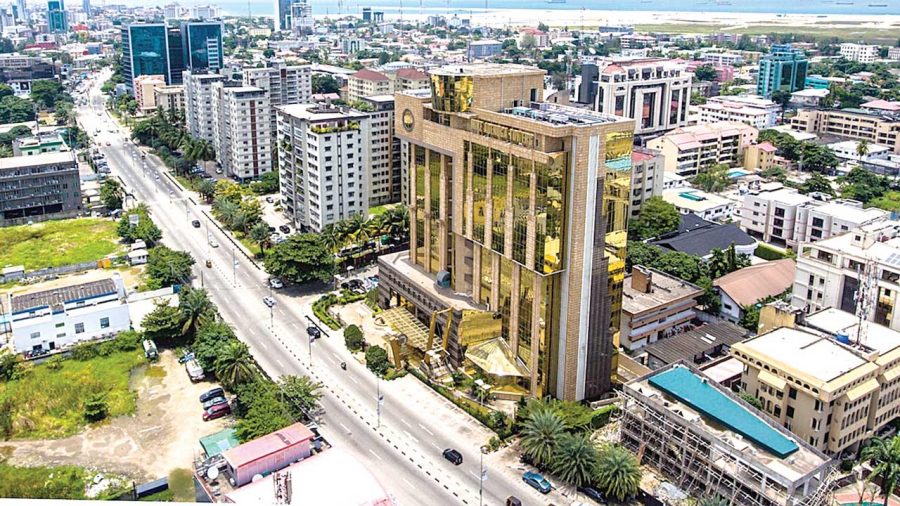The latest report released by the National Bureau of Statistics (NBS) has revealed that three South-Western States in Nigeria have the highest number of Small and Medium Enterprises (SMEs) in the country.
According to SMEs national survey conducted by the NBS, Lagos, Osun, and Oyo are the top states with the highest number of SMEs.
Some Breakdown: The NBS report shows that the total number of enterprises in Nigeria was estimated at 41.5 million, spread out across the 36 states in the country. The breakdown further shows that while microenterprises constitute a high 99.8% (41.4 million) of total SMEs, Small businesses make 71,228 (0.17%), even as medium enterprises comprise just 1,793 enterprises in the county.
- As expected, Nigeria’s commercial hub, Lagos, recorded the highest with a total of 8,395 or 11.5% of total SMEs in the country, followed by Oyo (6,131 or 8.4%) and Osun 3,007 or 4.1%).
- On the other hand, states with the fewest SMEs in Nigeria as of 2017 are Yobe, Bayelsa, and Borno.
- Specifically, Borno has 538 (0.7%) SMEs, Bayelsa recorded 300 (0.4%) while Borno has only 102 (0.7%) SMEs in the state.

[READ: Report reveals Small Businesses in Nigeria have created over 59 million jobs]
Best Performing State: Three States in South Western Nigeria may have recorded the highest number of SMEs in Nigeria, but in terms of growth states in northern Nigeria recorded the highest growth in the number of SMEs.
According to the NBS report, Kwara, Nasarawa, and Jigawa witnessed the highest growth across all states in Nigeria. SMEs in Kwara state grew by 526.5%, Nasarawa state (132.5%), and Jigawa (116%).
On the other hand, the biggest decline in the number of SMEs was recorded in Kano, Rivers, and Plateau. Specifically, Kano had the biggest decline of 70%, followed by Rivers (45.1%) and Plateau (27.8%).
Key Growth Trends: According to the NBS report, microenterprises, comprise 99% of MSMEs drives the growth trend.
• Compared with 2013, both total MSMEs and microenterprises grew by 12.1%
• Small enterprises grew by 4.6% for the period under review
• Also, the number of medium-sized enterprises decreased significantly from 4,670 in 2013 to 1,793 in 2017. This means medium-sized enterprises dropped by 61%.
[READ: Stakeholder explains why FG should come up with MSME development plan]
Sectors dominated by SMEs: According to the report, the composition of sectors is different for each business type classification, as Education and Construction top five (5) for medium-scale enterprises.
- Wholesale/Retail Trade, Agriculture, as well as other services and activities, make up 76.3% of Micro-enterprises.
- Education, Manufacturing, and Wholesale/Retail Trade make up 68% of small enterprises in Nigeria.
- Manufacturing, Wholesale/Retail Trade, and Human Health & Social Works make up 68% of medium enterprises.

Skills shortage: The NBS revealed that some sectors that require specialized skills and technical know-how suffer from a high skills shortage.
- Micro enterprises find the highest skills shortage in sectors that are consumer-facing, with the exception of Manufacturing which also requires specialized skills
- Accommodation & Food Services are both severely short skilled for both business classifications.
- There’s a widespread lack of capital and poor integration into the financial markets, which may be due to low business planning incidence and low formalization.
- Most enterprises are operating without legal & financial protection.
- Meanwhile, it was stated that the lack of planning in MSME contributes to a high rate of failure as well as reluctance from investors in providing capital.
Upshots: The NBS report ranks Lagos state with the highest number of SMEs in Nigeria, and this is largely expected as the recent report on ease of doing business released by the World Bank shows that Lagos ranks top in ease of starting a business. This also explains why foreign investors prefer to invest in the state.
Meanwhile, other states Osun and Oyo which recorded some of the highest numbers of SMEs, give a ray of hope that growth in small businesses is not skewed.
Lastly, States like Kwara, Nasarawa and Jigawa recorded the highest growth in SMEs. Note that Kwara State, for instance, receives the lowest monthly federal revenue allocation. Hence, the boost in SMEs indicates that the economies of these states may soon begin to improve.
[ALSO READ: Lagos and Abuja remain top destinations for Foreign Investment in Nigeria]























Great, fine, and insightful report.
Please can I have the population of SMEs per state in the South Western part of Nigeria?